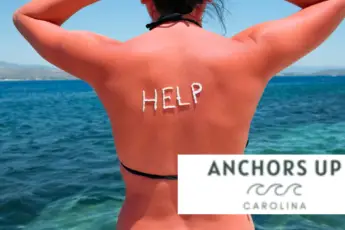As a former captain, I have been exposed to a multitude of weather conditions while out on the water. Fortunately, I never ran into any serious issues as a result of the weather. However, boaters often make mistakes by misjudging weather conditions, and it creates a life-threatening situation. Here is what you need to know about boating safety and, in particular, safety related to the weather.
Read The Weather Report Before Going Boating
One of the best ways to remain safe is to check the weather report before heading out on the water.
Importantly, a marine forecast will provide an abundance of information to determine whether or not it is safe to boat.
As a captain and recreational boater, I would use the resources available to determine conditions in advance. For this reason, I was better prepared while on the water or made the decision to stay dockside.
I recommend reading the National Weather Service marine forecast. The forecast will provide the following details.
Wind Direction And Speed
One of the most important weather conditions to consider when going out boating or fishing is the wind direction and speed.
Knowing the wind direction is valuable because it will help you better assess the conditions. For example, if you’re boating along the east coast of Florida, an east wind, southeast wind, or northeast wind will push waves toward the land. Comparatively, nearshore waters will be more calm in a west wind because the wind is moving from the land to the ocean.
Furthermore, speed is another indicator of conditions. Stiff winds cause larger waves, which makes navigation more challenging. Light winds are generally associated with calm waters.
Wave Heights
The marine forecast informs boaters of the expected heights of the waves. Typically they are posted in a range, for example, from 3-5 feet.
Without question, it is important to know the wave height before determining if it is safe to go out on the water. Remember, some boats are not designed to sustain large waves; therefore, you’ll be at risk of capsizing.
One of the most dangerous places to navigate during high winds is through inlets. The combination of tides and wind can lead to the formation of massive waves. However, the marine forecast will not provide wave heights in an inlet but instead on the open waters. Know that the wave will be larger in inlets when the tide and wind are going against each other.
Precipitation
The last piece of helpful information included in the marine forecast is the conditions of the sky. Importantly, by reading the weather ahead of time, you can determine what to expect as far as sun, clouds, rain, thunderstorms, and more are concerned.
Boating Safety Is Directly Associated With Reading The Weather
The last thing that you want to do is head out on the water when the conditions are unsafe. With that said, here is how to determine if it is safe based on the marine forecast.
Small Craft Advisories
In a situation when the National Weather Service has issued a small craft advisory, it is essential to refrain from going boating.
You will be putting yourself, your family, and your friends in danger if you boat under this type of warning. Undoubtedly, the wind will be stiff, and the seas will be high during a small craft advisory.
Considering The Storm Forecast Before Boating
When the weather report calls for a high probability of thunderstorms, it is best to avoid going boating.
I have been in a multitude of thunderstorms while boating and can assure you that it is not a pleasant experience. Lightning is serious business, and the last thing you want is for someone or the boat to get hit.
The Implications Of Wind And Boating Safety
Unfortunately, wind, especially sustained winds over long periods of time, will build large waves. With that said, if the forecast calls for high winds, it is best to stay at home.
High winds are less than pleasant while boating. You’re likely to get continuous seaspray and be forced to navigate large waves.
Large Waves And Boating Safety
As a boater, I have experienced extremely large waves. However, I can tell you that I would rather have been dockside compared to on the water.
Large waves present a problem because of the risk of capsizing, passengers going overboard, or the boat becoming inundated with water.
So, know the limitations of your boat are concerned in relation to wave heights. Don’t push the limits.
Boatings Safety Means Reading The Marine Forecast
One of the last things you want to do is be caught out on the water when the weather is less than ideal. All too often, boaters fail to check the weather and go boating when the conditions are not safe. Take the time to look up the forecast on your phone or a computer. Boating safely is of the utmost importance.







